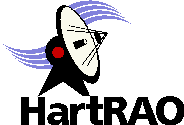
HartRAO Home >
news >
Radio Astronomy Practical 2005/09/01-07
Radio Astronomy Practical 2005/09/01-07
Three groups of students converged on HartRAO on 2005 August 30 to produce
the largest group yet carrying out a radio astronomy practical at the
observatory.
Eleven students of South Africa's National Astrophysics and Space Science
Programme arrived via the Boyden Observatory, comprising Charles Copley,
Ewald Zietsman, James Tagg, Pheneas Nkundabakwia, Takalani Mashamba, Oyapo
Chimidza, John Bosco Habarulema, Zama Katamzi, Annelie Roux
and Patrice Okouma.
They were joined by three Physics Hons students from Rhodes University (Donald Carr, Oliver King
and Stephen Robertson), and four students from the Radar Remote Sensing Group of the
University of Cape Town (Nebiha Shafi, Monica Wu, Andile Mngadi and Sydney
Dunn).
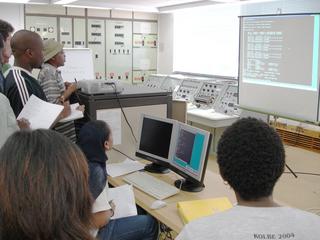
Click on image for large version
Under the guidance of Mike Gaylard, the students are seen here calibrating
the microwave receivers on the telescope by injecting a signal of known
intensity from a noise diode, under computer control from the control room.
The data are projected onto a screen.
Radio galaxy 3C218 was used to calibrated the telescope in five
wavlength bands. The students observed some objects with "unknown" radio
characteristics - the planets Jupiter and Venus, the prototype quasar 3C273,
the well-known Orion Nebula, and the Crab supernova remnant.
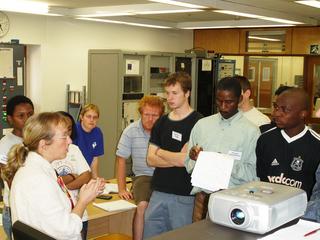
Click on image for large version
Sarah Buchner explains how we map the Sun's emission at a wavelength of
2.5 cm.
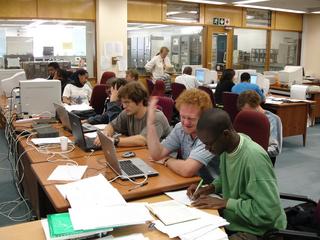
Click on image for large version
The students reducing data using spreadsheets on PCs.
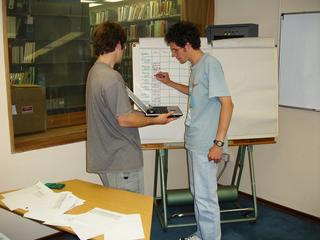
Click on image for large version
Do the teams reducing the data get the same answers? Oliver King adds his
numbers to the table.
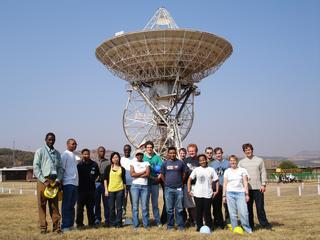
Click on image for large version
Its Sunday morning and time for a close look at the telescope.
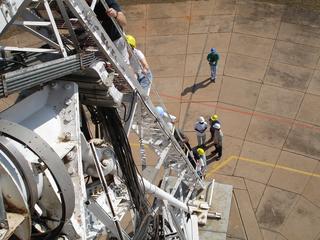
Click on image for large version
Climbing the telescope.
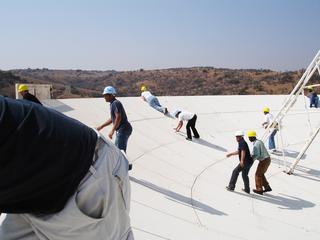
Click on image for large version
Rather gingerly moving to the edge of the telescope.
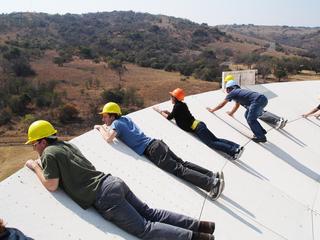
Click on image for large version
A careful look over the edge of the dish.
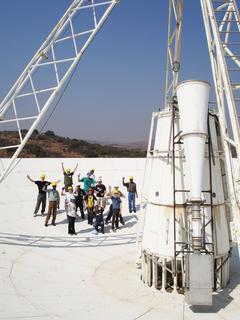
Click on image for large version
The group show that they survived the climb.
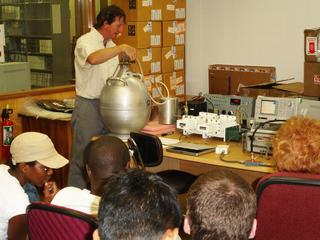
Click on image for large version
Bubble, bubble, toil and trouble - Justin Jonas demonstrates how to measure
the noise temperature of a receiver using hot and cold loads. Here a liquid
nitrogen bath provides the cold load.
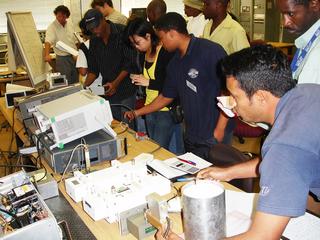
Click on image for large version
Students measure the receiver temperature while in the background Justin
describes the configuration.












